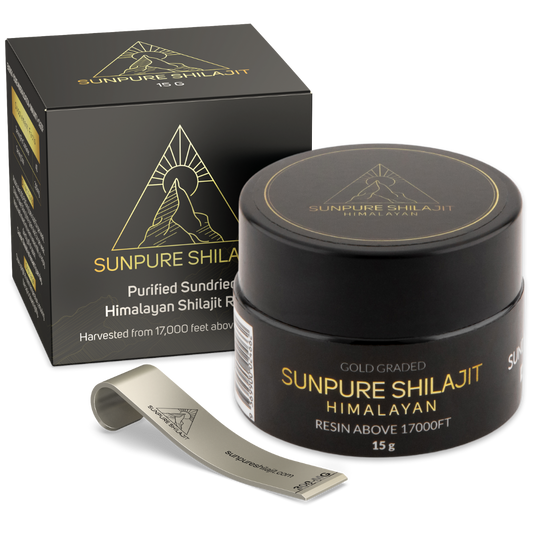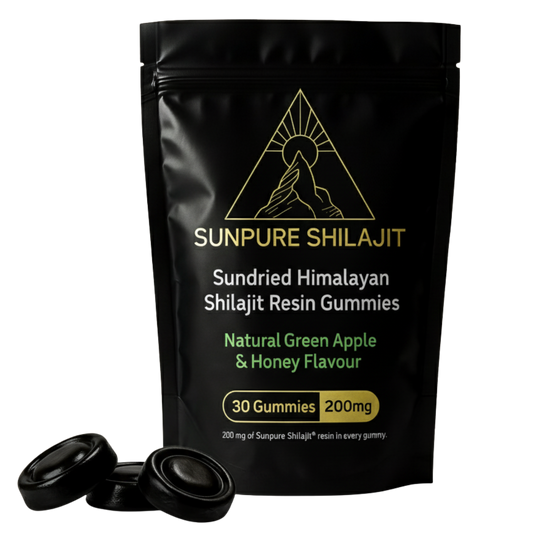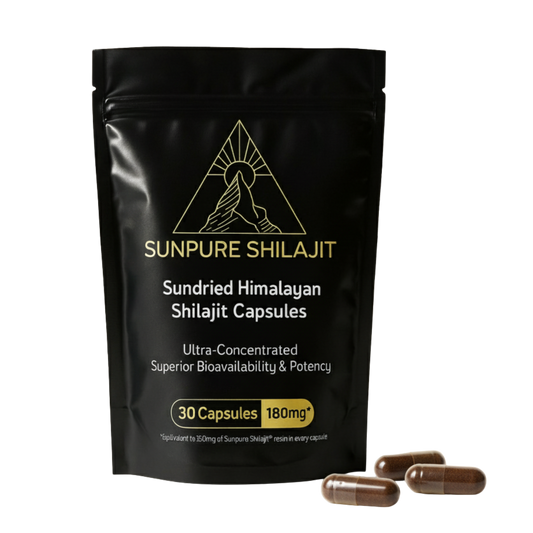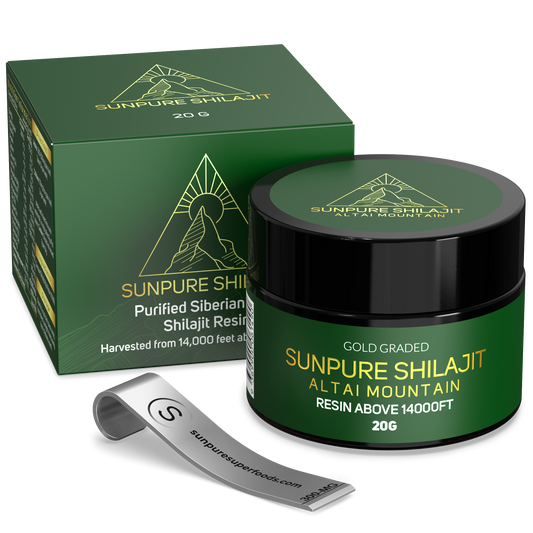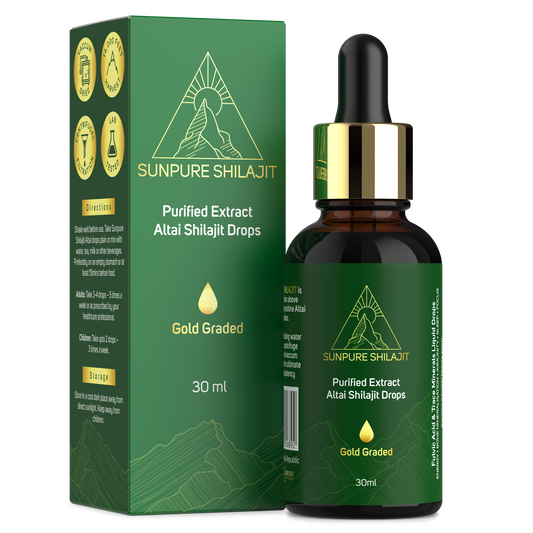Types of Shilajit
Are you curious about what type of shilajit is the best and authentic? You might get different answers if you ask around. After all, everyone has their own perspective. That's why we've put together a comprehensive guide on all types of shilajit. This guide will help you understand the different types of shilajit, how they vary geographically, and which ones you should avoid. With so many options available, it can be confusing to determine which type of shilajit is the best for you. However, in this guide, we provide accurate information on the topic, and we discuss the differences between the various forms of shilajit in great detail, from their geographic origins to the different forms they come in.
Different Origins of Shilajit
Shilajit can be classified based on its geographical region of origin. It is typically found in the cracks, caves, and crevices of mountains at high altitudes. The quality and characteristics of shilajit depend on factors such as the mineral composition, extraction method, and region where it is found.Despite these variations, all types of shilajit are known to provide essential nutrients to cells and improve overall health. The highest quality shilajit is usually found in the Himalayan and Altai ranges, both of which are steeped in rich cultural history and stand at some of the highest altitudes in the world.
Altai Shilajit (Momiyo/Mumio)
Shilajit, also known as mineral pitch or Mumio in Russian, is a natural substance that has been used for centuries in traditional medicine. While shilajit can be found in several locations around the world, the Altai Mountains in Siberia, Russia, are home to the most potent type of shilajit, known as Altai shilajit or Momiyo.
Altai shilajit is extracted from mountain ranges with altitudes between 10,000 to 14,000 feet, which have been largely untouched by humans. During the summer, water flows through these mountains and dissolves minerals and other organic substances from the rocks, forming rich deposits of raw Momiyo in the crevices and rifts of the mountainous caves.
The local people living in the vicinity of Altai mountain ranges have been using Momiyo as a traditional medicine supplement for ages. They collect the raw form of Momiyo from the mountain rocks and naturally purify it using the mountain streams. This process involves low temperatures, allowing the large particles to rise to the top before draining off the finer particles through a sieve.
The final stage of purification involves drying, which modern technology has made faster by boiling the Momiyo using fire to evaporate its moisture. As a result, vendors obtain a shilajit product in the form of resin, liquid, or powder. However, this is not the most effective method of drying, and the natural and ancient way of purification is sun drying. Despite this, 99% of vendors still use fire drying evaporation methods. On the other hand, locals in the villages surrounding the Altai mountain ranges use sun drying to maintain the minerals' potency, but this is hard to come by.
Altai Shilajit, also known as Russian Shilajit or Momiyo, differs from Himalayan Shilajit in terms of mineral composition, altitude, and geological properties. It is a potent form of shilajit that is extracted from Siberia, Russia. While Himalayan Shilajit is more potent, Altai Shilajit is equally effective and has unique benefits to offer.
Himalayan Shilajit
The Himalayan Mountains are renowned for producing the most potent and well-known form of Shilajit, which is called Himalayan Shilajit. Unlike Altai Shilajit, the extraction process of Himalayan Shilajit is carried out at a higher altitude.
Located to the south of Altai, the Himalayan Mountain range spans across Pakistan, China, Nepal, Bhutan, and Northern India. This area is home to some of the highest mountains in the world, including Mount Everest, which stands at a towering 29,029 feet. Himalayan Shilajit is typically collected from altitudes of 14,000 to 18,000 feet.
Himalayan Shilajit is an essential ingredient in Ayurvedic medicine and has been used for centuries to treat a wide range of ailments. It is still one of the most potent substances in Ayurvedic and Tibetan medicine.
Similar to Altai Shilajit, Himalayan Shilajit can be seen oozing from the rocks during the summer months. However, the collection and purification methods used in Pakistan, where most of the Himalayan Shilajit is sourced, differ from those used in other regions of the world.
While there are various purification methods available, boiling using fire is the most common method used for purification. However, this method not only evaporates the moisture from the Shilajit but also destroys some of its nutrients. Few locals in Pakistan use a natural 45 day sun-drying purification method that preserves the potency and minerals of the Shilajit, such as calcium, magnesium, potassium, and other vital elements.
4 Types of Himalayan Shilajit
When it comes to Himalayan Shilajit, there are four distinct types that are graded based on their color and mineral composition. This grading system can be confusing for some, but it provides valuable information about the potency and region of origin.
The below shilajit grading applies only to Himalayan Shilajit:
- The first type is Black Shilajit, also known as Iron Shilajit, which has a dark color and high iron content. It is typically extracted from high-altitude regions of the Himalayas.
- The second type is Silver Shilajit, also known as White Shilajit, which has a light color and high silver content. It is usually extracted from lower altitudes in the Himalayas.
- The third type is Copper Shilajit, also known as Blue Shilajit, which has a bluish color and high copper content. It is typically extracted from the Kashmir region of the Himalayas.
- The fourth and final type is Gold Shilajit, also known as Red Shilajit, which has a reddish-gold colour and high gold content. It is usually extracted from the high-altitude regions of the Himalayas.
Each type of Himalayan Shilajit has its own unique mineral composition and potency, making it important to understand the grading system when selecting a shilajit supplement. The most common and popular form used in traditional medicine is the first type, black shilajit.
While black shilajit is the most commonly available type in the market, Copper and Gold shilajit are much rarer to come by. Some researchers claim that Gold and Copper shilajit are the best, while others swear by Black shilajit. Nevertheless, it is agreed that all types of Himalayan Shilajit offer significant health benefits. After all, all pure forms of shilajit are potent and packed with essential minerals, and good for the health.
Shilajit in Other Regions
Shilajit is not limited to just the Altai and Himalayas mountain ranges, as it can also be found in other high-altitude regions around the world. Countries such as China, Japan, Europe, Australia, South Africa, Afghanistan, Venezuela, and more have been known to have shilajit deposits. However, it's important to note that the quality of shilajit varies greatly across different regions. For the most effective and potent results, it is recommended to use Altai or Himalayan Shilajit.
Different Forms of Shilajit
Resin, powder, capsule, tablet, liquid... more coming soon
-
Sundried Himalayan Shilajit Resin
Regular price From $68.00 USDRegular priceUnit price per -
Himalayan Shilajit Gummies
Regular price From $41.00 USDRegular priceUnit price per -
Shilajit Capsules, Sundried Himalayan
Regular price From $41.00 USDRegular priceUnit price per -
Sundried Himalayan Shilajit Drops 30ml
Regular price $96.00 USDRegular priceUnit price per -
Altai Shilajit Resin 20g
Regular price $35.00 USDRegular priceUnit price per$35.00 USDSale price $35.00 USD -
Altai Shilajit Drops 30ml
Regular price $55.00 USDRegular priceUnit price per

